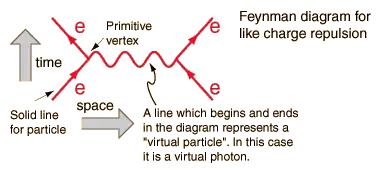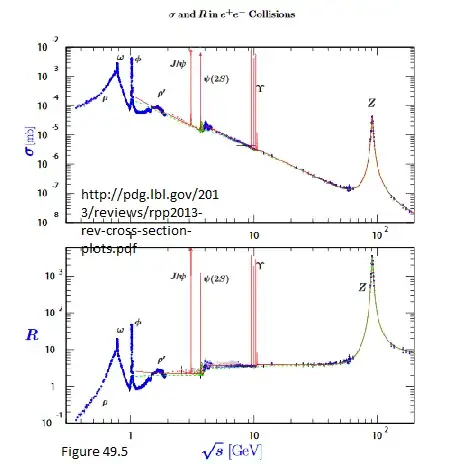Do all virtual particle travel at light speed in a vacuum? else wouldn't that imply they should have rest mass however tiny? When they pop back out of existence do their mass disappear instantly? BTW what is the heaviest virtual particle ever found?
3 Answers
Do all virtual particle travel at light speed in a vacuum?
Light speed is the limit for any transfer of energy/momentum and information.
else wouldn't that imply they should have rest mass however tiny?
As virtual particles are described by a four vector, it will have a length value which by definition is the invariant mass of a particle. Real particles have positive and fixed invariant mass. Virtual particles can have any value of invariant mass allowed within the limits of integration, where they are defined.
Here is the definition of a virtual particle, in this pictorial representation of the integration that must be carried out to get the crossection of e-e- scattering.
Virtual particles live only within integration limits, they have the quantum numbers of the named particle but their mass is off shell, within the limits of the implied integration.
When they pop back out of existence do their mass disappear instantly?
They do not exist outside integration limits, which supply the energy for the interaction. If you are thinking of vacuum loops of pair produced particle antiparticle, they can only exist in corrections to real particle interactions. If no real particles supply four vectors for the interaction, there are no observable virtual particles.
BTW what is the heaviest virtual particle ever found?
Virtual particles cannot be observed. They can be stated as a mathematical hypothesis, but their mass has to be within the limits of the integration.
In e+e- annihilation , the closer to the mass of the Z the incoming energy is, the closer the virtual Z is to the on shell mass of 90+ GeV of the Z.
- 236,935
Massive fields can give rise to virtual particles (e.g. virtual electrons). They can have any momentum since they aren't required to satisfy the mass shell condition $p^2=-m^2$.
Remember that rest mass isn't necessarily conserved during relativistic scattering events. What is conserved is four-momentum. Virtual particles aren't an exception to this rule. As far as I know, the top quark is the heaviest fundamental particle (virtual or otherwise) ever found.
- 311
It is my understanding that, at least from my basic familiarity with the Casimir effect, virtual particles can achieve significant duration. They may well have a rest mass. How the binaries that pop out related to Newtonian physics, I can't say. But I think that when they pop out, they rather expel a measurable amount of radiation - Hawking radiation, if I'm not mistaken (which is likely). But this radiation is how they detect black holes.

